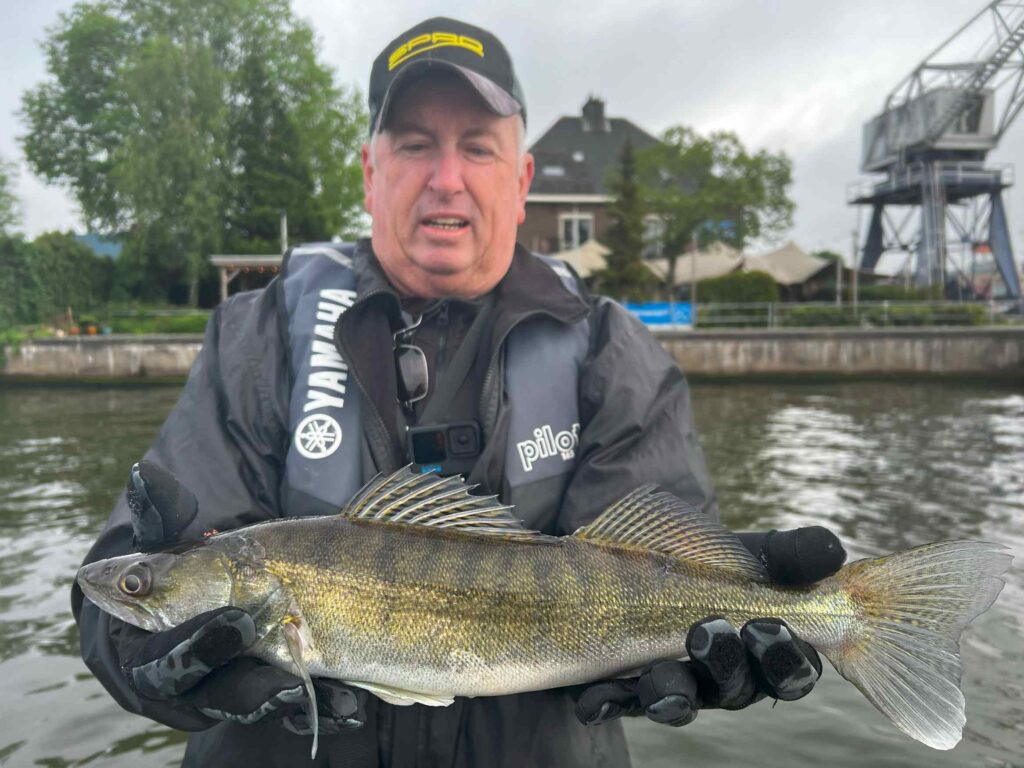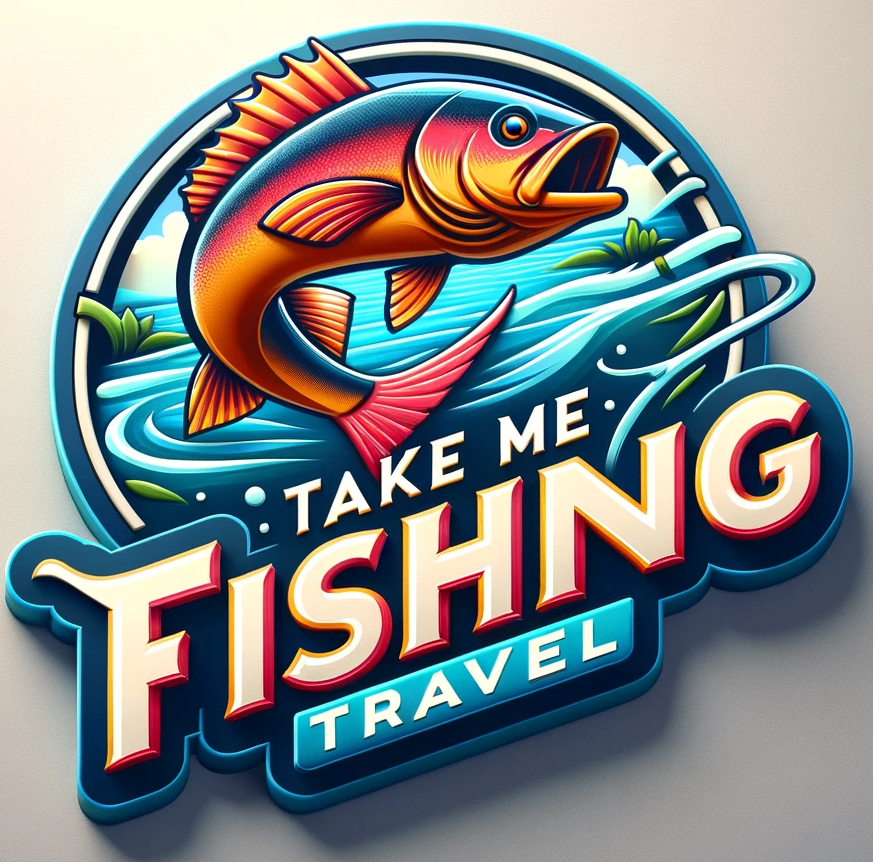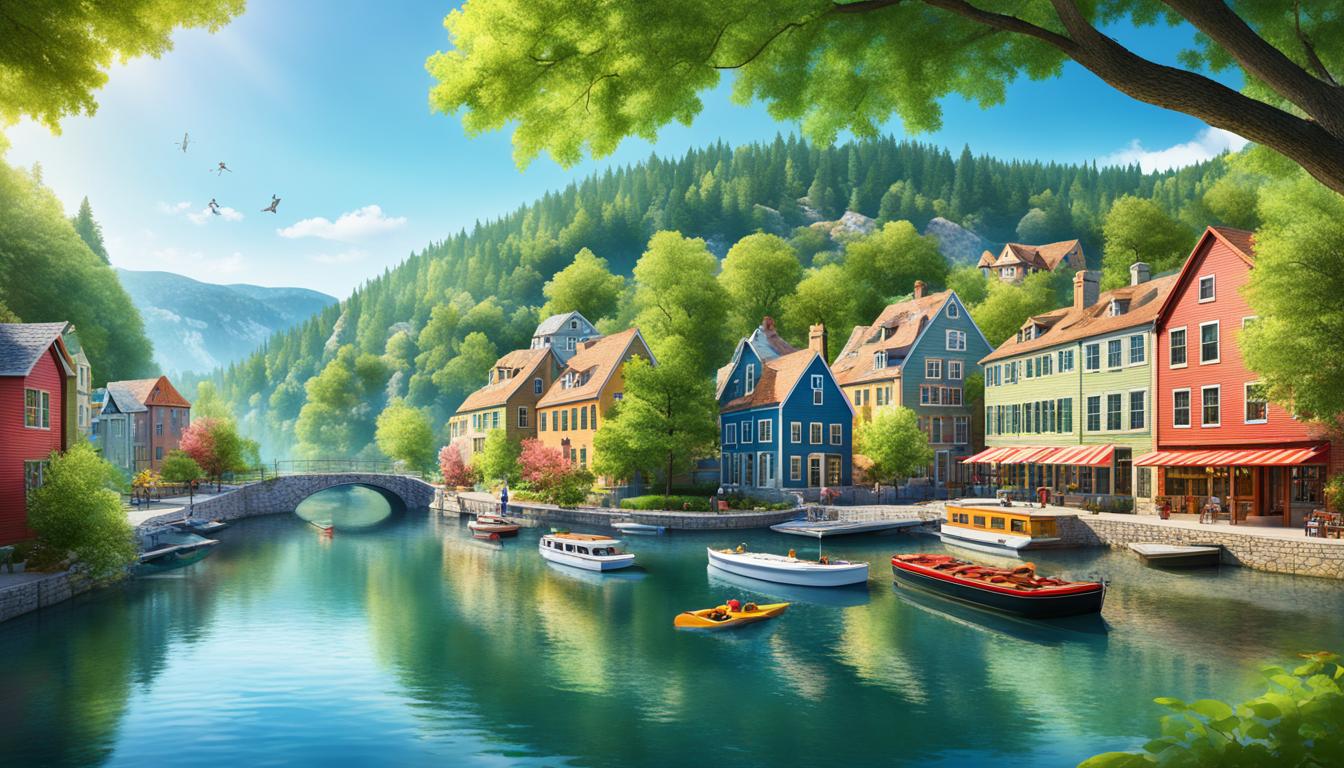This post contains affiliate links.
Key Takeaways:
- Zander can grow up to 30 pounds, making them an exciting freshwater predator.
- The River Ebro in Spain and the Fenland drains in the UK are among the top destinations for zander fishing.
- Zander have a distinctive green-grey coloration and sharp teeth.
- Anglers can use small rubber lures and fish during low light conditions for increased success.
- Zander fishing offers thrilling experiences and the opportunity to reel in impressive catches.
About Zander – Characteristics and Habits
Let’s dive into the fascinating world of the Zander, a freshwater species known for its unique characteristics and intriguing habits. Scientifically known as Sander Lucioperca, this fish is closely related to the American Walleye, making it an intriguing subject for anglers and nature enthusiasts alike.Picture a fish with a spikey dorsal fin, large eyes that aid in hunting during low light conditions, and a distinctive stripey pattern adorning its body. That’s the Zander for you! Its striking appearance is just the beginning of its allure.Zander can be found in various water bodies, such as lakes, ponds, rivers, and even brackish environments. These adaptable creatures thrive in slow-flowing water and are well-suited to low visibility conditions. So, if you’re exploring a murky river or a quiet pond, keep an eye out for this predatory marvel.Speaking of their predatory nature, Zander are voracious feeders. They prey on small schooling fish, as well as their own young, displaying their prowess as top-level predators. Anglers seeking the thrill of the chase will certainly find it in the Zander’s hunting techniques.
Did you know? Zander are considered a valuable food fish in Europe, appreciated for their delicate flavor and versatility in the kitchen.Now that you’re familiar with the characteristics and habits of the Zander, you’ll be better equipped to understand and appreciate this remarkable species. Get ready to dive into the world of Zander fishing and uncover the secrets of reeling in these elusive creatures.
The Captivating Characteristics of Zander
| Characteristics | Description |
|---|---|
| Spikey dorsal fin | Supports stability and agility during hunting |
| Large eyes | Enhance vision in low light conditions for successful predation |
| Stripey pattern | Provides camouflage and adds to the species’ unique allure |
Fun Fact: Zander have the ability to rapidly expand their stomachs, allowing them to swallow prey whole, no matter the size!
Habits and Hunting Techniques
Zander are skilled hunters, thanks to their unique habits and specialized tactics. Here are a few fascinating insights into their way of life:- Zander are well-adapted to slow-flowing water, where they patiently await their prey.
- They thrive in low visibility conditions, making them particularly active during dusk and dawn.
- These cunning predators often ambush their prey, lurking in areas with plenty of cover.
- Zander use their sharp teeth to swiftly capture unsuspecting fish, displaying their predatory prowess.
Popular Zander Fishing Tactics
To catch Zander, you need a cunning and strategic approach. Luckily, there are several tried and tested fishing tactics that can help you reel in these elusive predators. Whether you’re an experienced angler or a novice, these tactics will give you an edge in your pursuit of the prized Zander.Tactic #1: Bait and Lure Variety
To entice Zander, you’ve got to offer them a tempting menu. Start by using small live or fresh dead baits, such as minnows or small fish, which are irresistible to hungry Zander. Additionally, artificial lures can be highly effective in mimicking the movement and appearance of prey. One particular type of lure that has proven successful is small rubber lures. Their lifelike action and soft texture make them an ideal choice for Zander fishing. Remember, variety is key when it comes to bait and lures, so experiment with different options to find what works best for you.Tactic #2: Balanced Tackle and Delicate Wire Traces
When it comes to Zander fishing, using the right tackle is crucial. Opt for balanced tackle, such as medium-to-light lure outfits or softer ‘avon style’ bait rods. This will ensure that you have the optimal strength and sensitivity to handle the fight of a Zander while maintaining control. Zander are armed with sharp teeth that can easily cut through traditional fishing lines, so it’s essential to use a delicate wire trace. This will protect against bite-offs and give you the added confidence to land your catch.Tactic #3: Fishing During Low Light Conditions
If you want to increase your chances of catching Zander, timing is everything. These predators are known to be more active during low light conditions, such as dusk and darkness. When the sun starts to set, Zander come out of their hiding spots, taking advantage of the reduced visibility to hunt their prey. By fishing during these prime time windows, you’ll have a higher probability of enticing Zander to strike. So grab your gear, head out to the water, and get ready for some exciting night fishing!There’s no denying the allure of Zander fishing. It requires skill, strategy, and a dash of luck to successfully hook one of these elusive predators. By employing these popular fishing tactics, you’ll increase your chances of catching Zander on your next angling adventure.Average Size of Zander
When it comes to Zander fishing, size matters. Landing a big catch is every angler’s dream, but what can you expect in terms of the average size of Zander? Let’s dive into the dimensions of this formidable freshwater predator.On the Line: Average Size of ZanderThe Zander is renowned for its impressive size. While some individuals can reach massive proportions, the average size of Zander falls between 3 and 8 pounds. These feisty fish are no pushovers, and reeling in a Zander of this size will provide you with an exciting challenge and a memorable fight.However, don’t underestimate the true specimens of the species. Zander exceeding 10 pounds are considered substantial catches, showcasing the true power and beauty of these aquatic predators. The thrill of battling with a heavyweight Zander is an experience that every angler should savor.The Weighty Contenders: World Record ZanderIf you’re looking for truly monstrous Zander, the world record can give you an idea of the upper echelons of their size range. The largest Zander ever recorded tipped the scales at a staggering 41 pounds 4 ounces. This heavyweight specimen proved that Zander can pack quite a punch and posed a formidable challenge for the angler who had the privilege of catching it.Here Comes the Champion: IGFA All-Tackle World RecordAs for the official all-tackle world record recognized by the International Game Fish Association (IGFA), it stands at an impressive 25 pounds 3 ounces. This remarkable Zander was reeled in from the depths of Lago Maggiore in Switzerland, showcasing the thrilling potential that European waters hold for anglers in pursuit of record-breaking catches.Big or Small: Every Zander Has Its Story
Remember, size isn’t everything when it comes to Zander fishing. Each catch, big or small, has its own story and offers anglers a moment of triumph on the water. So whether you’re battling with a 10-pound powerhouse or hooking into the world record holder, cherish every Zander that graces the end of your line.| Average Zander Size Range (in pounds) | World Record Zander (pounds) | IGFA All-Tackle World Record Zander (pounds) |
|---|---|---|
| 3 – 8 (1.5876 kilograms) | 41 pounds 4 ounces (18.710685 kilograms) | 25 pounds 3 ounces (11.42 kilograms) |
Zander Fishing Tips and Techniques
When it comes to targeting Zander, you’ll need a few tips and techniques up your sleeve. These elusive fish require finesse and knowledge to successfully reel in. Let’s dive into some expert advice on how to improve your chances of catching Zander.Fish with Balanced Tackle
One of the keys to successful Zander fishing is using balanced tackle. Medium-to-light lure outfits and softer ‘avon style’ bait rods are usually your best bet. This allows for better casting accuracy and control, ensuring you can maneuver your bait to the right spots.Use a Delicate Wire Trace
Don’t underestimate the sharp teeth of Zander. To prevent those bite-offs, it’s essential to use a delicate wire trace. This thin but strong wire acts as a protective barrier between the fish’s jaws and your bait. Trust us, it’s worth the extra precaution.Fish with Small Rubber Lures
When it comes to bait, small rubber lures are a go-to choice for Zander fishing. Work these lures slowly and close to the bottom, simulating injured prey. The natural movement and realistic appearance of these lures can be highly enticing to hungry Zander.Show Patience and Persistence
Patience is truly a virtue when it comes to Zander fishing. These fish can be finicky feeders, so it’s important to stay focused and persistent. Experiment with different techniques, locations, and bait presentations. Stay aware of the conditions and adjust your approach accordingly.“Remember, Zander fishing is a game of finesse and strategy. Take your time, read the water, and adapt to the conditions. The reward of landing one of these enigmatic fish is well worth the effort.” – Experienced Zander angler
Zander Fishing Tips and Techniques Cheat Sheet
| Tip | Technique |
|---|---|
| Fish with Balanced Tackle | Medium-to-light lure outfits and softer ‘avon style’ bait rods |
| Use a Delicate Wire Trace | Thin but strong wire trace to prevent bite-offs |
| Fish with Small Rubber Lures | Slow retrieve, close to the bottom |
| Show Patience and Persistence | Experiment, adapt, and stay persistent |
 Mastering the art of Zander fishing requires a combination of skill, knowledge, and a little bit of luck. With these tips and techniques, you’ll be well-equipped to tackle the challenge and increase your chances of landing that prized Zander.
Mastering the art of Zander fishing requires a combination of skill, knowledge, and a little bit of luck. With these tips and techniques, you’ll be well-equipped to tackle the challenge and increase your chances of landing that prized Zander.Top Zander Fishing Destinations in Europe
Looking for the top zander fishing spots in Europe? You’re in luck! Europe is home to some of the prime zander fishing destinations that anglers can’t resist. Whether you’re a seasoned angler or a beginner looking for an exciting adventure, these fishing hotspots will not disappoint. Get ready to cast your line in these picturesque locations and reel in some impressive zander catches.1. River Ebro, Spain
When it comes to zander fishing, the River Ebro in Spain is a legendary destination. Its slow-flowing water and murky conditions create the perfect habitat for these predatory fish. Anglers flock to this renowned spot in search of trophy-sized zander. With its stunning scenery and abundant fish population, a fishing trip to the River Ebro is an experience you won’t want to miss.2. Fenland Drains, United Kingdom
Although zander are non-native to British waterways, the Fenland drains in the UK have become a popular destination for anglers seeking zander fishing action. These expansive networks of interconnected waterways provide an ideal environment for zander to thrive. Prepare yourself for an exciting adventure as you navigate the labyrinth of water channels and cast your line in search of the elusive zander.| Destination | Key Features |
|---|---|
| River Ebro, Spain | Legendary zander fishing hotspot with slow-flowing water and murky conditions. |
| Fenland Drains, UK | Expansive interconnected waterways offering excellent zander fishing opportunities. |
Zander Fishing Success Stories
When it comes to zander fishing, anglers have plenty of exciting success stories to share. From reeling in impressive specimens to unexpected feeding frenzies, these adventures on the water can leave you with big zander catches that you’ll be talking about for years to come.One such success story took place on the renowned River Ebro in Spain, where an angler landed a beautiful zander measuring 80 cm. This impressive catch showcases the potential for big zander in this prime fishing destination.But the key to success doesn’t solely rely on the location. Changing fishing spots can often lead to unexpected feeding frenzies, giving you the opportunity to capture big zander when you least expect it. Factors such as wind direction and water conditions can also play a role in determining the success of your zander fishing trips, so it’s important to be adaptable and open to trying different approaches.To give you a taste of the excitement and possibility that awaits you on the water, here are a couple of zander fishing success stories:“I couldn’t believe my luck when I cast my line into the murky waters of the River Ebro. Within minutes, I felt a strong pull, and after a thrilling battle, I landed a massive zander, measuring 90 cm! It was a true test of strength and skill, and a catch I’ll never forget.”– Mark Thompson, Experienced Angler
“During a fishing trip with friends, we discovered a hidden spot on the Danube River. It was a day of non-stop action, with zander after zander striking our lures. We couldn’t keep up with the excitement as we landed one big zander after another. It was a testament to the incredible fishing opportunities that can be found in unexpected places.”– Sarah Johnson, Fishing Enthusiast
 These success stories are just a glimpse into the thrilling world of zander fishing. With a combination of skill, knowledge, and a bit of luck, you too can experience the joy of landing big zander and creating your own unforgettable fishing memories.
These success stories are just a glimpse into the thrilling world of zander fishing. With a combination of skill, knowledge, and a bit of luck, you too can experience the joy of landing big zander and creating your own unforgettable fishing memories.The Behavior and Migration of Zander
Zander, with their distinctive characteristics, exhibit fascinating behavior and migration patterns. Understanding these aspects can greatly enhance your chances of catching these elusive freshwater predators.Behavior
Zander have a unique behavior that varies depending on their activity levels. When more active, they can be found at different depths in the water column, often rising higher to hunt for prey. To successfully target Zander, it’s important to take note of their preferred areas within a waterway. They tend to favor specific zones such as drop-offs, sunken islands, or protected areas where they can ambush their prey undetected.“The ability to understand and adapt to Zander behavior is key to outsmarting these cunning predators. By targeting their preferred areas and using the right techniques, you can increase your chances of landing a prized catch.” – John Smith, Experienced Angler
Migration Patterns
Zander also exhibit natural migrations during different seasons. They tend to move from shallow areas to deeper waters and back again to spawning grounds. Understanding these migration patterns can provide valuable insights into where and when to find Zander in abundance. During colder months, when they seek warmer waters, focusing on deeper areas can yield successful catches.To help visualize the migration patterns of Zander, below is a table showcasing their movement throughout the year:| Season | Location |
|---|---|
| Spring | Shallow areas, near spawning grounds |
| Summer | Varies based on temperature, often deeper waters |
| Fall | Transitioning to shallower areas |
| Winter | Deeper areas with more stable temperatures |
Conclusion
After exploring the fascinating world of Zander fishing, it is clear that this pursuit offers anglers an exhilarating challenge in Europe’s diverse waters. By gaining insights into the behavior and habits of these formidable freshwater predators, and employing effective tactics and techniques, you can significantly increase your chances of landing impressive catches.Whether you choose to cast small rubber lures, fish during low light conditions, or experiment with live or fresh dead baits, the thrill of Zander fishing awaits. These crafty hunters lurk in the depths, waiting for their prey, and it’s up to you to outsmart them. The satisfaction of successfully reeling in a Zander is unparalleled.In summary, Zander fishing requires patience, skill, and a bit of luck. Understanding their preferences for specific areas and adapting your approach accordingly will give you an edge. So, gear up, hit the waters of Europe’s prime Zander fishing destinations, and embark on an adventure that will test your angling prowess and leave you with unforgettable memories.In final thoughts, remember to respect the environment and practice catch-and-release whenever possible. This ensures the sustainability of Zander populations and preserves the thrill of the sport for future generations. So, get ready to embrace the excitement, challenge, and rewards that Zander fishing has to offer!FAQ
What are some of the top destinations to catch Zander?
What are the characteristics and habits of Zander?
What tactics can be used for Zander fishing?
What is the average size of Zander?
What tips and techniques can improve Zander fishing?
Where are the top Zander fishing destinations in Europe?
Do you have any Zander fishing success stories?
What is the behavior and migration pattern of Zander?
Source Links
- https://www.sportquestholidays.com/blog/species-spotlight-zander/
- https://www.tomscatch.com/fish-species/zander-39
- https://www.westin-fishing.com/en/articles-videos/locate-the-big-zander
This post contains affiliate links.

